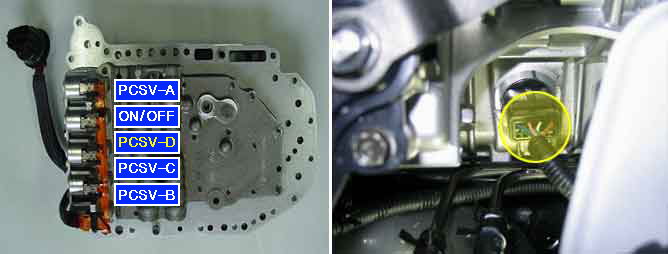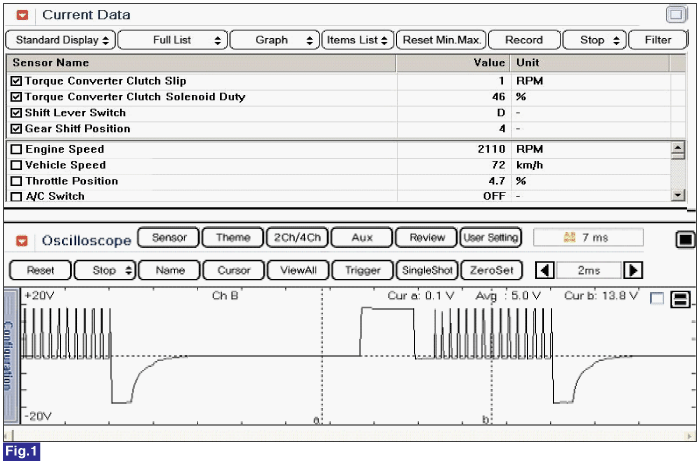

The PCM/TCM controls the locking and unlocking of the Torque Converter Clutch ( or Damper Clutch ), to the input shaft of the transmission, by appling hydraulic pressure. The main purpose of T/C clutch control is to save fuel by decreasing the hydraulic load inside the T/C. The PCM/PCM/TCM outputs duty pulses to control the Damper Clutch Control Solenoid Valve( TCCSV ) and hydraulic pressure is applied to the DC according to the TCC duty ratio value. When the duty ratio is high, high pressure is applied and the Damper Clutch is locked. The normal operating range of the Damper Clutch Control duty ratio value is from 30%(unlocked) to 85%(locked).
The PCM/TCM checks the Damper Clutch Control Signal by monitoring the feedback signal from the solenoid valve drive circuit. If an unexpected signal is monitored (for example, high voltage is detected when low voltage is expected, or low voltage is detected when high voltage is expected) the PCM/TCM judges that TCCSV circuit is malfunctioning and sets this code.
Item | Detecting Condition | Possible Cause | |
Case 1 | DTC Strategy |
•
Electrical Check | ※ TORQUE CONVERTER(DAMPER) CLUTCH : TCC
•
Open or short in circuit
•
Faulty TCC SOLENOID VALVE
•
Faulty PCM/TCM |
Enable Conditions |
•
PWM DUTY > 25% | ||
Threshold Value |
•
Comparision solenoid operation time with Feed back signal.(Solenoid ON and Short circuit) | ||
Case 2 | Enable Conditions |
•
- | |
Threshold Value |
•
Comparision solenoid operation time with Feed back signal.(Solenoid OFF and Short circuit) | ||
Diagnostic Time |
•
More than 0.3sec | ||
Fail Safe |
•
Locked in 3 rd gear. | ||
Solenoid Valve for Pressure Control
Sensor type : Normal open 3-way
Operating temperature : -30℃∼130℃
Voltage/Current : 5V, 1.2 A Max.
Internal resistance : 3.5 ± 0.2 Ω(25℃)

Fig 1) Signal waveform at 46% duty